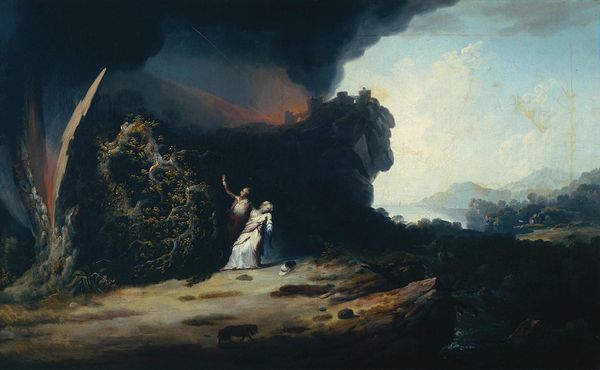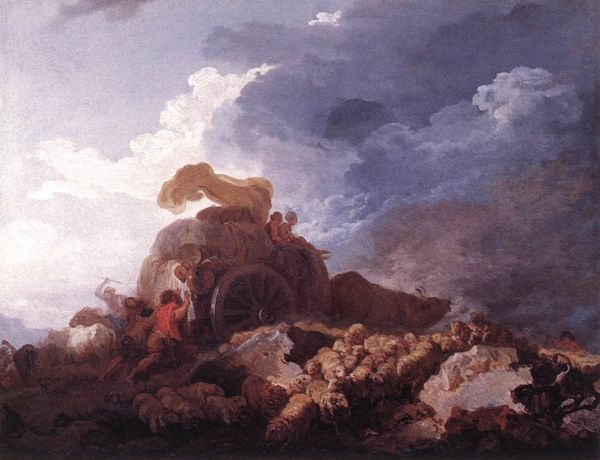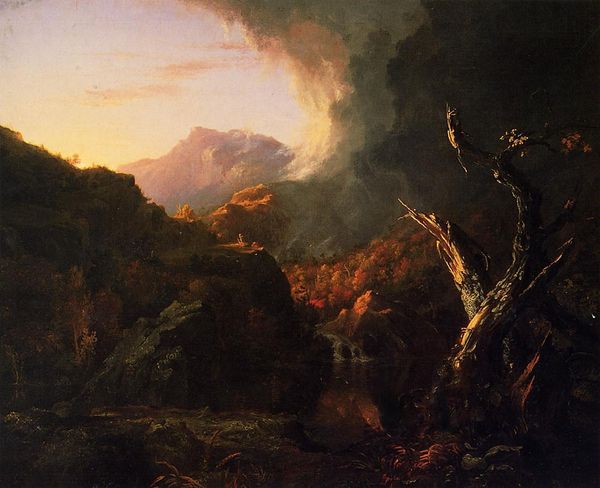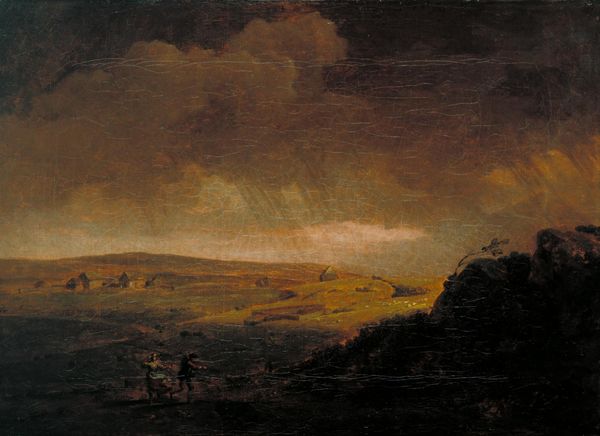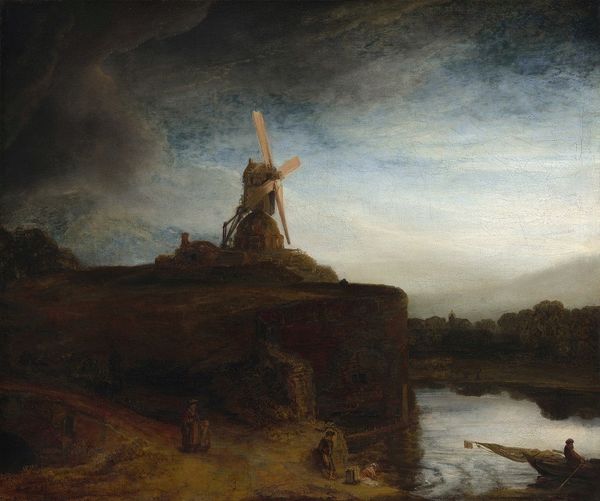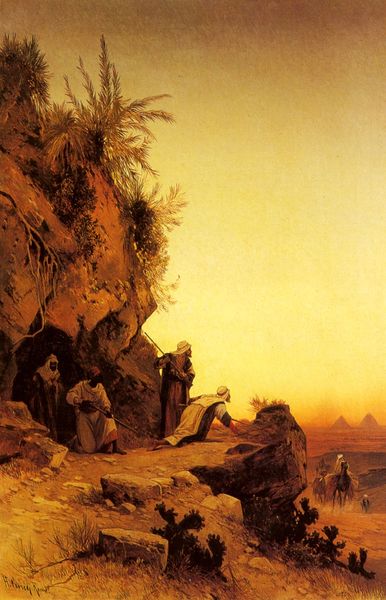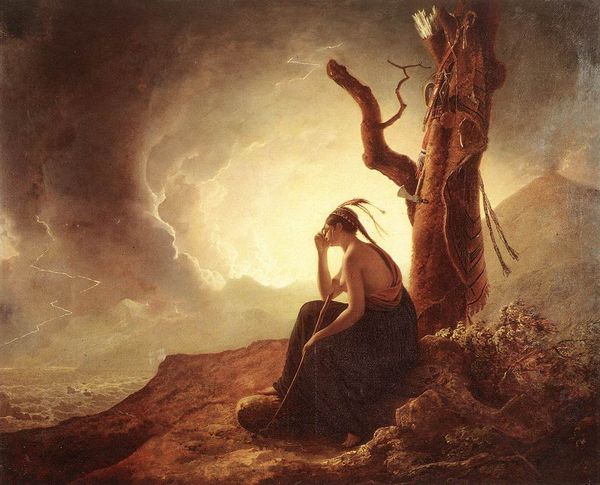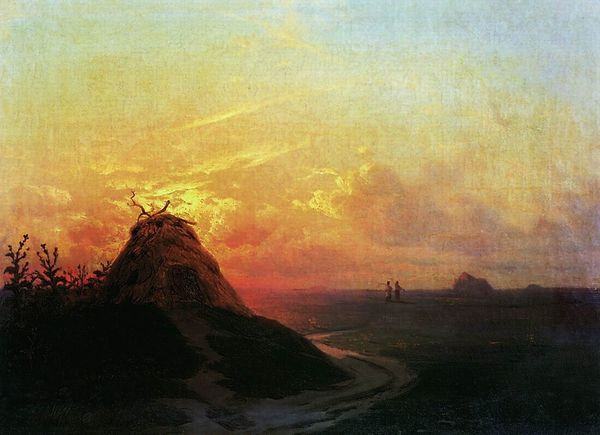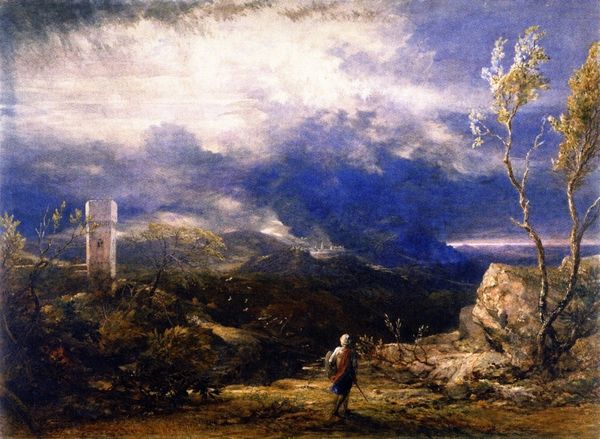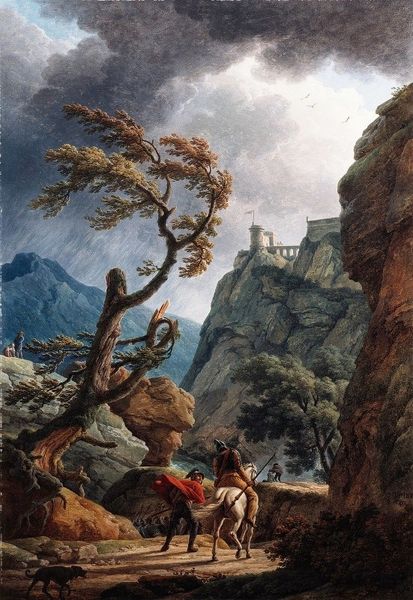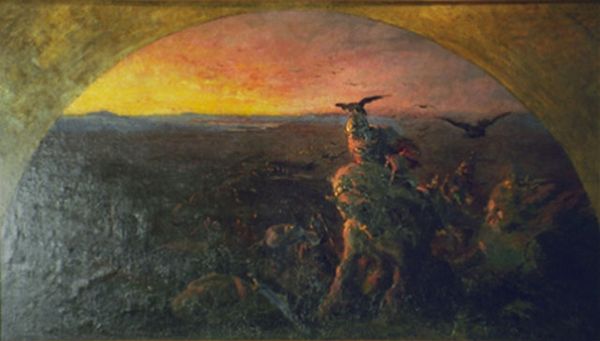
painting, oil-paint
#
painting
#
oil-paint
#
landscape
#
bird
#
realism
#
sea
Dimensions: 78.7 x 109.2 cm
Copyright: Jamie Wyeth,Fair Use
Curator: Jamie Wyeth's "The Rookery," painted in 1977 using oil, is a study in muted tones. Editor: Stark! And restless. The composition is centered around a rugged rock formation under a heavy, almost oppressive sky. There’s a real sense of brooding drama created by the dark palette and the dynamic positioning of the birds. Curator: Absolutely. Observe the diagonal lines formed by the birds’ wings and their placement around the rock. The entire visual plane functions like a semiotic net, trapping your focus on this singular struggle to overcome entropy. It presents a striking tension between the solid, earthly rocks and the volatile birds. Editor: It’s as though Wyeth is painting a community under duress. I find myself wondering what socio-political climate might have fostered this somewhat uneasy scene. What role did, say, post-Vietnam disillusionment play in informing Wyeth's portrayal of this particular isolated group dynamic? Curator: Fascinating question. Perhaps Wyeth uses realism to reflect the perceived external threats and inherent fragility of human society. But consider the materiality of the oil paint—the visible brushstrokes creating a palpable texture on the rocks. We could see this not just as social commentary, but as an examination of substance and perception. Editor: Certainly the texture contributes to the overall visual weight. Speaking of which, how much do you suppose this relates to growing anxieties over issues such as natural resource consumption and our effects on migratory animals at this time? Does the visual dominance of this rookery signify themes relevant to environmentalist awareness emerging through the 70's? Curator: Such interpretations seem almost limitless, yet the core essence remains the aesthetic presentation. Wyeth prompts contemplation by purely formal means—texture, line, form—engaging us in an enduring visual discourse on reality versus representation. Editor: That is true. We see both the micro and the macro mirrored in a somewhat timeless and surprisingly pertinent manner. Curator: Precisely. It serves as a potent reminder of how art speaks beyond eras. Editor: Yes, even when we place them within specific contextual conversations like we've touched on today, the formal strategies offer the richest areas of potential resonance and contemplation.
Comments
No comments
Be the first to comment and join the conversation on the ultimate creative platform.
